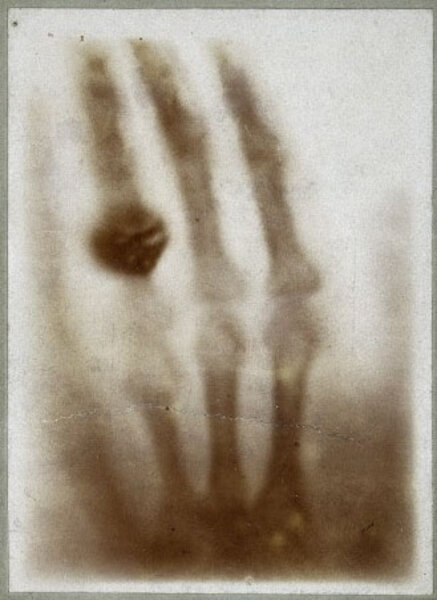In the late 1800s, the world became a seemingly magical place. Scientists discovered radiation, radio waves, and other invisible forces of nature. For a while there, many serious researchers joined seances and believed in ghosts. Science had discovered so many mysterious phenomena – things that the eye could not see but were definitely there – that many people wondered, what else might be out there?
German physicist Wilhelm Röntgen discovered one of these invisible powers by accident.
Röntgen experimented with cathode-ray tubes, basically glass tubes with the air sucked out and a special gas pumped in. They work kinda like modern-day fluorescent light bulbs. When Röntgen ran electricity through the gas, the tube would glow. But something strange happened after he surrounded the tube with black cardboard. When he turned on the machine, a chemical a few feet away started to glow. The cardboard should have prevented any light from escaping, so what caused this distant glow?
Little did he know that the cathode-ray tube had been sending out more than just visible light. It shot out invisible rays that could pass right through paper, wood, and even skin. The lab chemical that lit up – the one that tipped off Röntgen – reacted to these rays. He called the phenomenon X-rays. The X stood for "unknown."
Röntgen went on to capture the first X-ray images, including a shot of his wife's hand (pictured, above). Upon seeing this skeletal image, she exclaimed, "I have seen my own death!"








